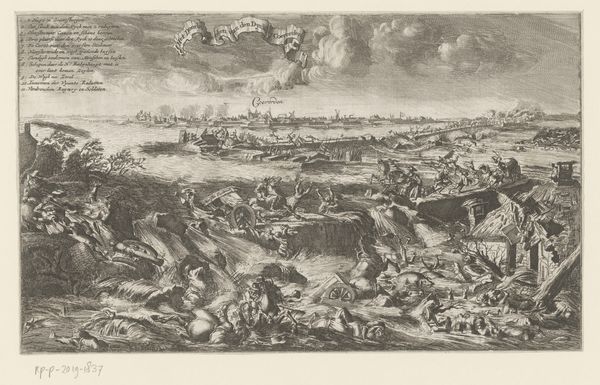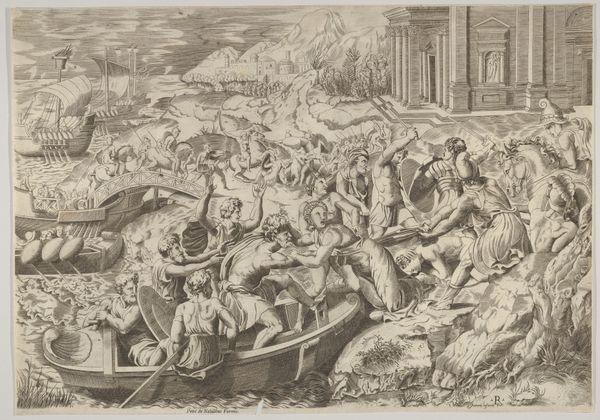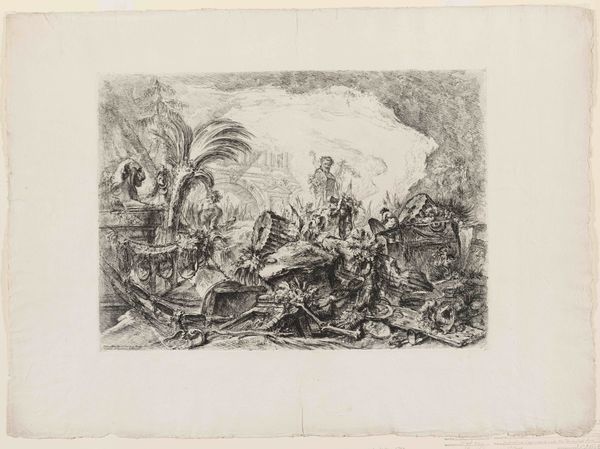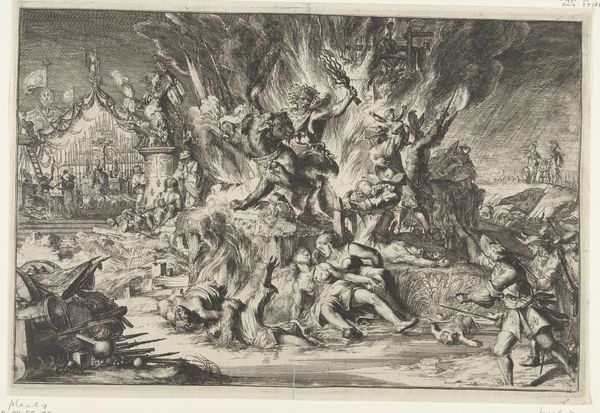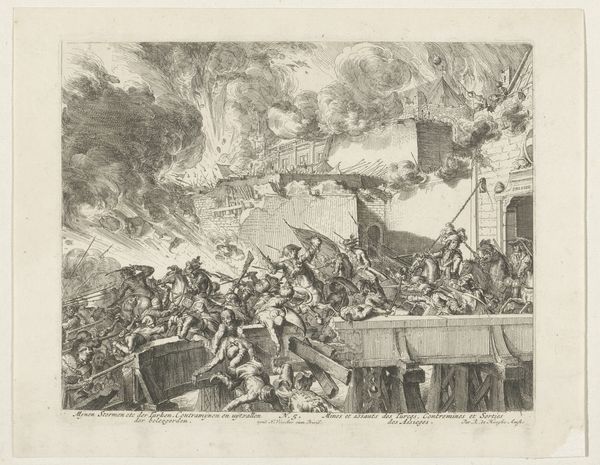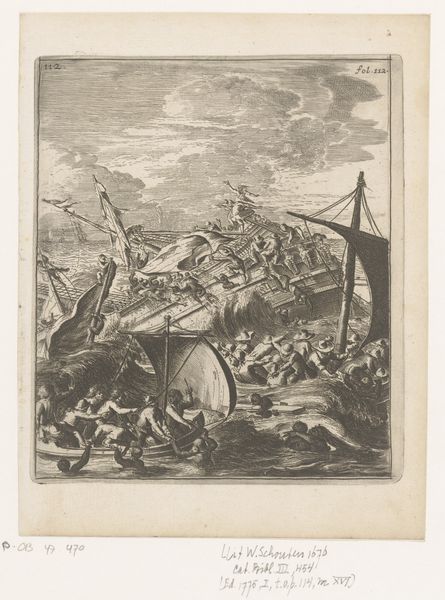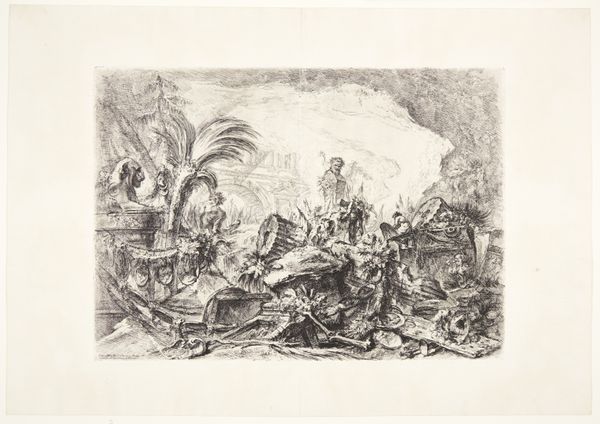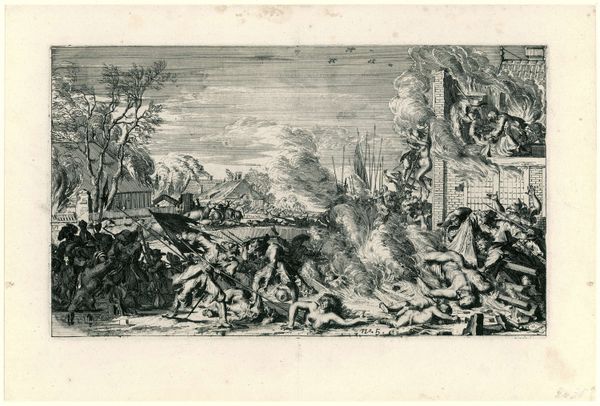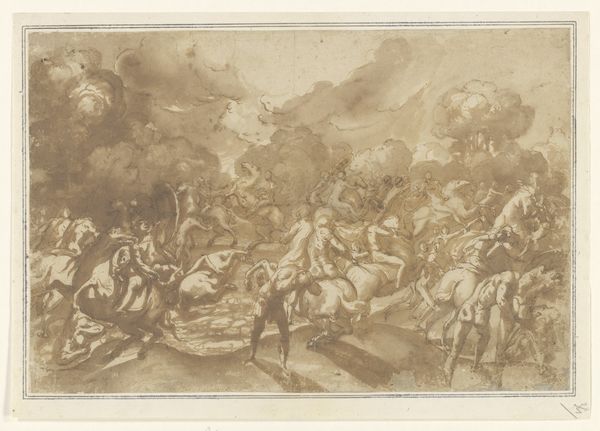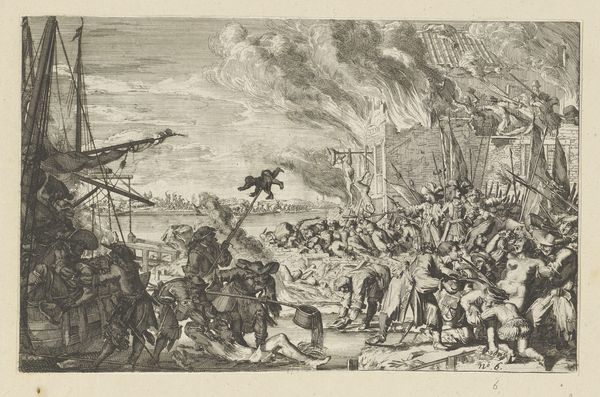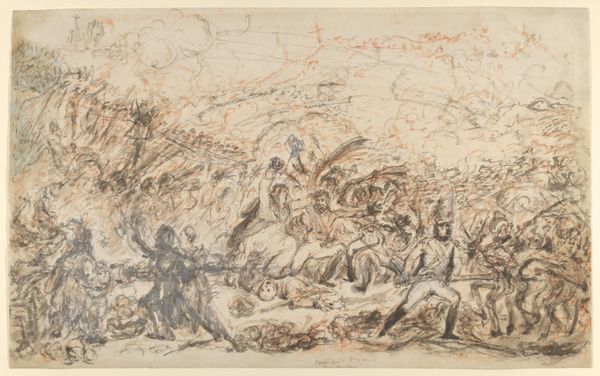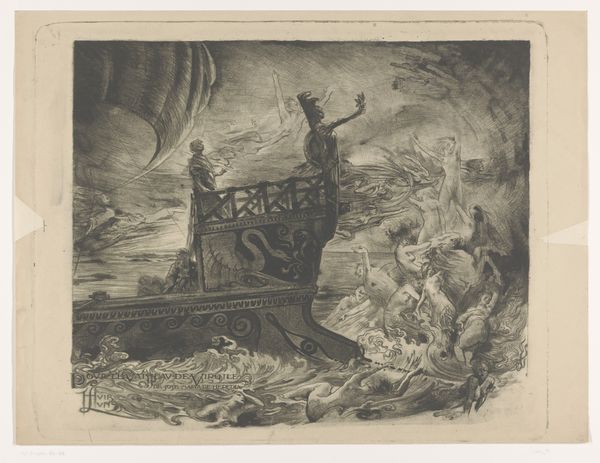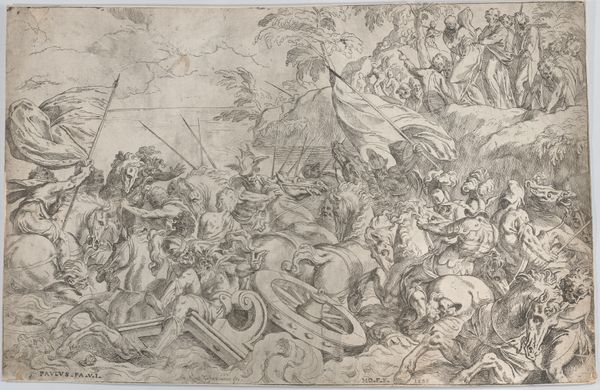
Dimensions: height 394 mm, width 505 mm
Copyright: Rijks Museum: Open Domain
Curator: Christian Bernhard Rode created this etching, "Christus verschijnt bij het Laatste Oordeel," between 1767 and 1779. It's currently part of the Rijksmuseum's collection. What's your initial impression? Editor: The immediate feeling is...chaos. Look at the stark contrast between the serene, illuminated upper register and the tumultuous, shadowy scene below. There’s an overwhelming sense of drama conveyed through the composition alone. Curator: Indeed. The print encapsulates Baroque ideals by depicting not just the theological event of the Last Judgment but its societal implications. Rode was working during a period of significant religious and philosophical debate, and images like this served to reinforce societal norms. The elite were able to communicate moral virtues to everyone. Editor: Focusing on the formal elements, the dynamism achieved through line and light is quite remarkable. The figures in the lower portion are all caught in moments of anguish, conveyed through energetic strokes. Notice how those fragmented architectural elements further amplify this feeling of disarray? Curator: The fragmentation is also reflective of broader anxieties. The toppling pillars could symbolize the fall of empires or the instability of earthly power in the face of divine judgment. This piece circulated as a print, meaning it became quite accessible. Editor: Consider also the ascending figures bathed in divine light; their poses are more idealized and elongated, directing our gaze upward to Christ. The tonal gradation is subtly orchestrated, guiding our eye and emphasizing the divide between earthly suffering and divine grace. Curator: The power dynamic, absolutely. Artworks such as these shaped collective thought by showcasing clear religious hierarchies. Those ascending into Heaven are notably still part of the socio-political elite in that they’re dressed formally with great poise. Editor: Yes, the artist employs recognizable iconography while adding his personal interpretation to amplify the expressive potential of the composition. There’s definitely something more complex happening here than simple didacticism. Curator: Overall, "Christus verschijnt bij het Laatste Oordeel" serves as a cultural artifact, reflecting 18th-century social anxieties and belief systems concerning morality and salvation, brought into accessible locations. Editor: And for me, considering Rode's print primarily triggers an interest in dissecting and contemplating the composition as a method of deconstructing meaning that comes through pictorial structure and internal aesthetic forces.
Comments
No comments
Be the first to comment and join the conversation on the ultimate creative platform.
